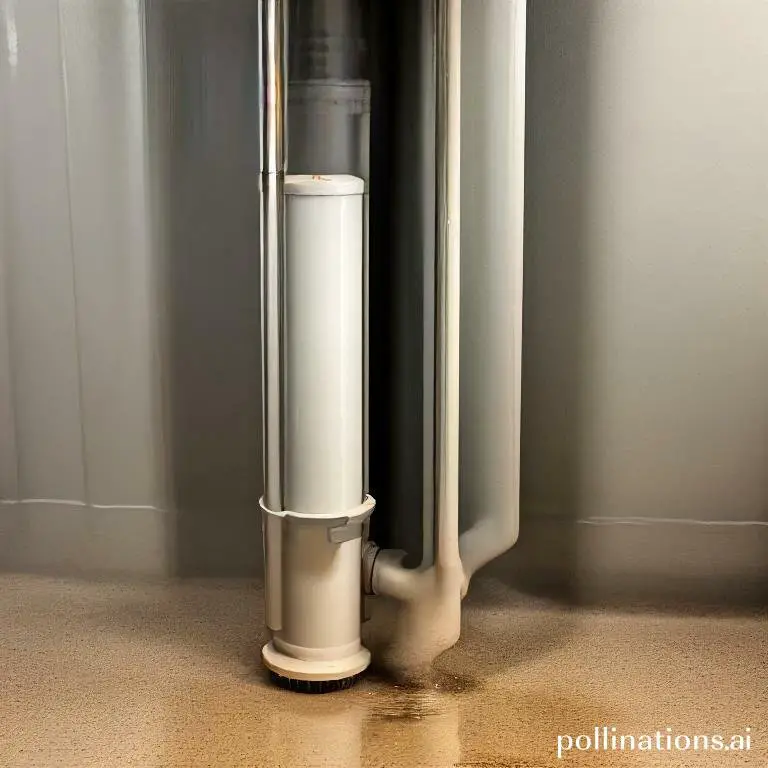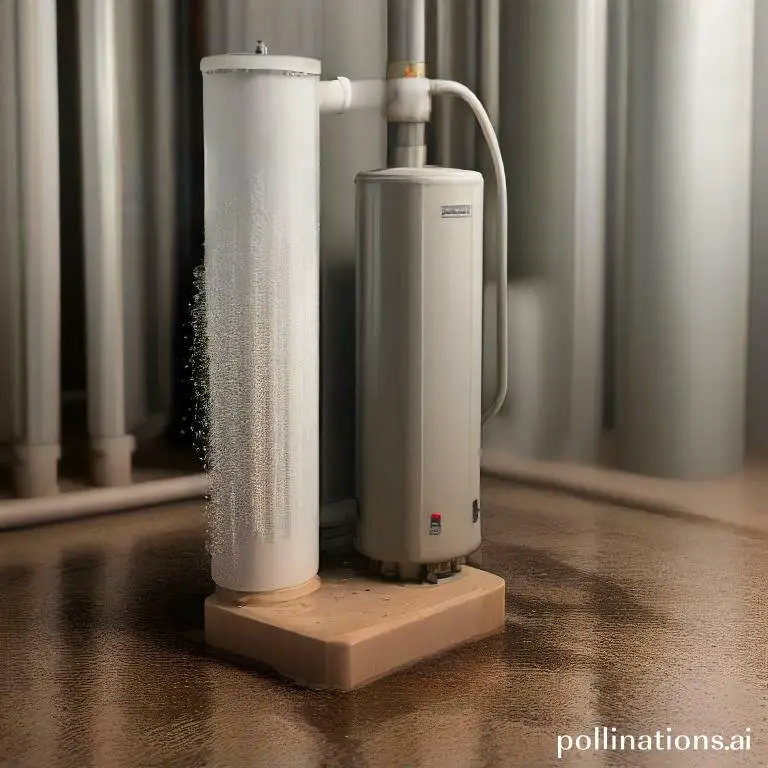
II. Regular maintenance, including sediment removal, can extend the life of a water heater.
III. Neglecting sediment removal can result in decreased efficiency, higher energy bills, and potentially dangerous malfunctions.
Sediment build-up in water heaters can significantly impact their lifespan. Over time, minerals and debris can accumulate at the bottom of the tank, causing decreased efficiency and potential damage to the heating elements.
Regular sediment removal is essential to ensure optimal performance and extend the lifespan of your water heater. By acknowledging this issue, you can prevent costly repairs and enjoy consistent hot water for years to come.
What is Sediment Buildup in Water Heaters?
Sediment buildup in water heaters refers to the accumulation of mineral deposits, debris, and other particles in the tank of a water heater over time. This buildup mainly consists of minerals like calcium, magnesium, and sediment from the water supply.
1. How Sediment Buildup Occurs in Water Heaters
Sediment buildup occurs due to the natural process of water heating. When water is heated, the minerals and sediment present in the water separate and settle at the bottom of the tank. This sedimentation process is more prominent in areas with hard water, which contains higher mineral content.
Example: When the water is heated, calcium and magnesium ions precipitate and form solid deposits at the bottom of the tank, leading to sediment buildup over time.
2. The Negative Effects of Sediment Buildup in Water Heaters
Sediment buildup in water heaters can have several negative effects on the performance and efficiency of the system.
Example: Increased sediment buildup can reduce the heating efficiency of the water heater, resulting in higher energy consumption and increased utility bills. It can also lead to decreased hot water supply and reduced water pressure due to clogged pipes and valves.
Example: Moreover, sediment buildup can cause corrosion and damage to the internal components of the water heater, leading to decreased lifespan and costly repairs or replacements.
It is essential to regularly monitor and address sediment buildup in water heaters to ensure optimal performance and longevity of the system. Regular maintenance, such as flushing the tank and removing the accumulated sediment, can help prevent these negative effects and prolong the lifespan of the water heater.
| Effects of Sediment Buildup in Water Heaters |
|---|
| Reduced heating efficiency |
| Increased energy consumption |
| Decreased hot water supply |
| Reduced water pressure |
| Corrosion and damage to internal components |
| Decreased lifespan |
| Costly repairs or replacements |
Signs of Sediment Buildup in Water Heaters
Sediment buildup in water heaters can lead to various issues, affecting their performance and efficiency. Imperative to be aware of the signs indicating sediment accumulation in order to take appropriate action and prevent further damage. Here are some key signs to look out for:
1. Reduced Hot Water Supply
One of the primary indicators of sediment buildup in a water heater is a reduced hot water supply. As sediment accumulates at the bottom of the tank, it takes up valuable space, leaving less room for hot water storage. This can result in shorter hot water durations or lower water temperatures, making it inconvenient for everyday use.
2. Unusual Noises from the Water Heater
Another sign of sediment buildup is the presence of unusual noises coming from the water heater. As water flows through the sediment, it can create a rumbling or popping sound. These noises indicate that the water heater is working harder to heat the water due to the insulating effect of the sediment. Ignoring these noises can lead to further damage and potential failure of the water heater.
3. Discolored Water
Discolored water, particularly a brown or rusty color, can be a clear indication of sediment buildup in the water heater. As sediment accumulates, it can mix with the water, resulting in a change in color. This not only affects the water quality but also indicates that the sediment has reached a significant level, potentially affecting the overall functioning of the water heater.
4. Increased Energy Bills
Sediment buildup can also lead to increased energy bills. As the sediment insulates the heating element, the water heater requires more energy to heat the water to the desired temperature. This increased energy consumption can result in higher utility bills, impacting your overall household expenses.
It is essential to address sediment buildup in water heaters promptly to avoid further complications. Regular maintenance, such as flushing the tank to remove sediment, can help maintain the efficiency and longevity of your water heater. If you notice any of these signs, it is recommended to consult a professional plumber to assess the situation and provide appropriate solutions.
How to Remove Sediment from Water Heaters
Pertaining to maintaining the efficiency and longevity of your water heater, essential to regularly remove sediment buildup. Sediment, such as minerals and debris, can accumulate over time and hinder the performance of your water heater. Follow these steps to effectively remove sediment from your water heater:
1. Turn Off the Water Heater
Before beginning the sediment removal process, ensure that the water heater is turned off. This will prevent any accidents or injuries during the procedure.
2. Drain the Water Heater Tank
Locate the drain valve at the bottom of the water heater tank. Attach a hose to the valve and place the other end in a suitable drainage area, such as a floor drain or outside. Open the valve to allow the water to drain from the tank. This will help remove the majority of the sediment.
3. Flush the Tank
Once the tank is drained, close the drain valve and turn on the cold water supply. This will create a forceful flow of water inside the tank, helping to dislodge and flush out any remaining sediment. Allow the water to run for a few minutes or until it appears clear.
4. Refill the Tank
After flushing the tank, close the cold water supply and open a hot water faucet in your home to release any excess air from the system. Once the faucet stops sputtering, it is an indication that the tank is full. Finally, turn on the water heater and wait for it to heat the newly filled water.
Regularly removing sediment from your water heater will not only improve its efficiency but also prolong its lifespan. By abiding by these simple steps, you can ensure that your water heater continues to provide hot water reliably.

Frequency of Sediment Removal in Water Heaters
In order to ensure the optimal performance and longevity of your water heater, indispensable to regularly remove sediment that may accumulate over time. This article will pioneer the recommended frequency of sediment removal and the factors that can affect it.
1. Recommended Frequency of Sediment Removal
Experts generally recommend that sediment should be removed from water heaters at least once a year. This regular maintenance helps to prevent sediment buildup, which can lead to various issues such as reduced efficiency and decreased lifespan of the water heater.
2. Factors that Affect the Frequency of Sediment Removal
The frequency of sediment removal may vary depending on several factors. These factors include:
- Water Hardness: If you live in an area with hard water, which contains high levels of minerals, sediment buildup may occur more quickly. In such cases, it is advisable to consider more frequent sediment removal.
- Water Usage: The frequency of sediment removal can also be influenced by the amount of water used in your household. Higher water usage may result in faster sediment accumulation, requiring more frequent removal.
- Water Heater Type: Different types of water heaters may have varying levels of sediment accumulation. For example, tankless water heaters are less prone to sediment buildup compared to traditional tank-based water heaters.
Pivotal to consider these factors and assess the condition of your water heater regularly to determine the appropriate frequency of sediment removal.
| Factors | Recommended Frequency |
|---|---|
| Water Hardness | Consider more frequent removal in areas with hard water |
| Water Usage | Assess based on household water consumption |
| Water Heater Type | Varies depending on the type of water heater |

Benefits of Sediment Removal in Water Heaters
Sediment buildup in water heaters can have several negative effects on its performance and lifespan. By regularly removing sediment from your water heater, you can enjoy the following benefits:
Extended Lifespan of the Water Heater
One of the main advantages of sediment removal is that it can significantly extend the lifespan of your water heater. Sediment, such as minerals and debris, can accumulate at the bottom of the tank over time. This buildup can cause corrosion and damage to the tank, leading to leaks and other issues. By removing the sediment, you can prevent these problems and ensure that your water heater lasts longer.
Improved Energy Efficiency
Another benefit of sediment removal is improved energy efficiency. When sediment builds up in the tank, it creates a layer of insulation between the heating element and the water. This insulation reduces the efficiency of the water heater, as it takes more energy to heat the water. By removing the sediment, you can intensify the heat transfer process and improve the energy efficiency of your water heater. This can result in lower energy bills and a more environmentally friendly operation.
Reduced Risk of Water Heater Failure
Sediment buildup can also increase the risk of water heater failure. As sediment accumulates, it can clog the drain valve, pressure relief valve, and other components of the water heater. This can lead to issues such as low water pressure, inconsistent water temperature, and even complete system failure. Regular sediment removal can help prevent these problems and ensure that your water heater functions properly.
Bottom Line
Regular sediment removal from your water heater can significantly increase its lifespan. Sediment buildup can cause corrosion, reduce efficiency, and even lead to leaks. Flushing your water heater once a year can help prevent these issues and save you money in the long run. Notwithstanding, it’s important to follow proper flushing procedures to avoid damaging your water heater or causing injury. If you’re not comfortable doing it yourself, consider hiring a professional plumber to do it for you. Remember, a little maintenance can go a long way in keeping your water heater running smoothly and efficiently for years to come.
Read More:
1. Sediment Removal And Water Heater Warranty
2. Sediment Removal For Commercial Water Heaters










